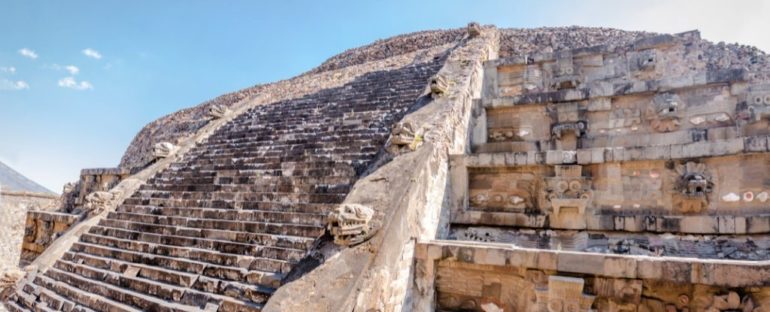Nearly 2,000 years ago, the ancient people of Teotihuacan wrapped bunches of flowers into beautiful bouquets, laid them beneath a jumble of wood and set the pile ablaze.
Now, archaeologists have found the remains of those surprisingly well-preserved flowers in a tunnel snaking beneath a pyramid of the ancient city, located northeast of what is now Mexico City.
The bouquet of flowers, which survived a bonfire 2,000 years ago. (INAH/Sergio Gómez)
The pyramid itself is immense, and would have stood 75 feet (23 meters) tall when it was first built, making it taller than the Sphinx of Giza from ancient Egypt. The Teotihuacan pyramid is part of the “Temple of the Feathered Serpent,” which was built in honor of Quetzalcoatl, a serpent god who was worshipped in Mesoamerica.
Archaeologists found the bouquets 59 feet (18 m) below ground in the deepest part of the tunnel, said Sergio Gómez-Chávez, an archaeologist with Mexico’s National Institute of Anthropology and History (INAH) who is leading the excavation of the tunnel.
Numerous pieces of pottery, along with a sculpture depicting Tlaloc, a god associated with rainfall and fertility, were found beside the bouquets, he added.
The bouquets were likely part of rituals, possibly associated with fertility, that Indigenous people performed in the tunnel, Gómez-Chávez told Live Science in a translated email. The team hopes that by determining the identity of the flowers, they can learn more about the rituals.
The team discovered the bouquets just a few weeks ago. The number of flowers in each bouquet varies, Gómez-Chávez said, noting that one bouquet has 40 flowers tied together while another has 60 flowers.
Archaeologists found evidence of a large bonfire with numerous pieces of burnt wood where the bouquets were laid down, Gómez-Chávez said. It seems that people placed the bouquets on the ground first and then covered them with a vast amount of wood. The sheer amount of wood seems to have protected the bouquets from the bonfire’s flames.

The tunnel that Gómez-Chávez’s team is excavating was found in 2003 and has yielded thousands of artifacts including pottery, sculptures, cocoa beans, obsidian, animal remains, and even a miniature landscape with pools of liquid mercury.
Archaeologists are still trying to understand why ancient people created the tunnel and how they used it.
Teotihuacan contains several pyramids and flourished between roughly 100 BCE and 600 CE. It had an urban core that covered 8 square miles (20 square kilometers) and may have had a population of 100,000 people.
This article was originally published by Live Science. Read the original article here.



